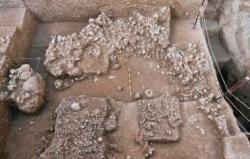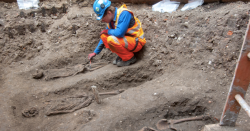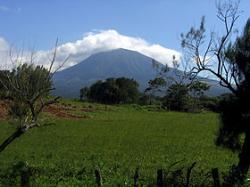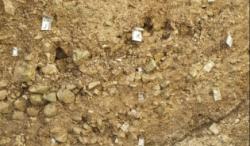INSTITUT SUPERIEUR D 'ANTHROPOLOGIE
INSTITUTE OF ANTHROPOLOGY
ONLINE COURSES / COURS A DISTANCE
SPRING TERM : APRIL 2014
REGISTER NOW
ISRAEL –  Ramle - Haifa University archaeologists dig up prehistoric remains near Ramle that date back to the Mousterian period. Horses, fallow deer, aurochs and rhinoceros were part of the human diet for those who lived in the area of present- day Ramle over 170,000 years ago, Haifa University scientists have discovered. In excavations near Ramle, archeologists have uncovered some of the earliest remains of human settlement in the Middle East, estimating that the findings date back to the Paleolithic era. The dig took place at the so-called Hector Site, and its findings were presented on Sunday by Dr. Yossi Zaidner, an archeology professor at Haifa University, who has overseen the excavation since 2010. According to a recent article published in the Journal of Human Evolution, the findings suggest that the area was once inhabited by humans from the Mousterian period, which dates back to the Middle Paleolithic era. The site was discovered in a karst indentation that reaches 34 meters deep. Zaidner says this discovery is extraordinary in that usually remains found in the Middle East from the Mousterian period are in caves rather than outdoors. “The large number of bones that we found in an area so small fit the pattern that we have observed from the cave dwellers,” Zaidner said. “But in the caves the remains of small animals were discovered. The bones of these large animals are more suited to open areas, but usually there were much fewer bones than what we saw now.” “It seems we have found an area that combines the characteristics of caves with those of open-air camps,” Zaidner said.
Ramle - Haifa University archaeologists dig up prehistoric remains near Ramle that date back to the Mousterian period. Horses, fallow deer, aurochs and rhinoceros were part of the human diet for those who lived in the area of present- day Ramle over 170,000 years ago, Haifa University scientists have discovered. In excavations near Ramle, archeologists have uncovered some of the earliest remains of human settlement in the Middle East, estimating that the findings date back to the Paleolithic era. The dig took place at the so-called Hector Site, and its findings were presented on Sunday by Dr. Yossi Zaidner, an archeology professor at Haifa University, who has overseen the excavation since 2010. According to a recent article published in the Journal of Human Evolution, the findings suggest that the area was once inhabited by humans from the Mousterian period, which dates back to the Middle Paleolithic era. The site was discovered in a karst indentation that reaches 34 meters deep. Zaidner says this discovery is extraordinary in that usually remains found in the Middle East from the Mousterian period are in caves rather than outdoors. “The large number of bones that we found in an area so small fit the pattern that we have observed from the cave dwellers,” Zaidner said. “But in the caves the remains of small animals were discovered. The bones of these large animals are more suited to open areas, but usually there were much fewer bones than what we saw now.” “It seems we have found an area that combines the characteristics of caves with those of open-air camps,” Zaidner said.
http://www.jpost.com/Enviro-Tech/Haifa-University-archaeologists-dig-up-prehistoric-remains-near-Ramle-346930
ROYAUME UNI –  Londres - Testing has confirmed that skulls discovered at a few Crossrail construction sites over the past year carry traces of Yersinia pestis, the bacteria linked to the Black Death that plagued medieval Europe, first infecting Britain in 1348. Historians had known that thousands of Black Death casualties were buried in or around London between 1348 and 1350. But they were uncertain of the mass grave's location until last March, when digging crews discovered twenty-five corpsesaround Charterhouse Square in central London, buried eight feet below Farringdon Road. Scientists are examining pottery shards at the burial sites to learn more precisely when the graves were dug. Apart from cause of death, the human remains also yield clues to the general nutrition of the deceased, most of them poor. All of them died without Oyster cards, which are relatively expensive.
Londres - Testing has confirmed that skulls discovered at a few Crossrail construction sites over the past year carry traces of Yersinia pestis, the bacteria linked to the Black Death that plagued medieval Europe, first infecting Britain in 1348. Historians had known that thousands of Black Death casualties were buried in or around London between 1348 and 1350. But they were uncertain of the mass grave's location until last March, when digging crews discovered twenty-five corpsesaround Charterhouse Square in central London, buried eight feet below Farringdon Road. Scientists are examining pottery shards at the burial sites to learn more precisely when the graves were dug. Apart from cause of death, the human remains also yield clues to the general nutrition of the deceased, most of them poor. All of them died without Oyster cards, which are relatively expensive.
http://gawker.com/archaeologists-excited-to-find-dead-brits-in-london-un-1554774706
COSTA RICA -  Rincon de la Vieja Volcano - Not much is known about the first native peoples to live near the massive Rincon de la Vieja Volcano in Costa Rica’s Guanacaste province. In about 900 AD, a tribe known as the Chorotegas migrated south from Mexico through Nicaragua to Guanacaste, explained Camacho. They lived in places along the Pacific Coast from Salinas Bay south to the Nicoya Gulf, but not in the interior. Archaeological findings show that a different people – probably who spoke a Chibchan language – lived in the area now forming the Rincon de la Vieja National Park from about 10,000 BC. Helping to uncover the secrets are 14 archaeological sites that have been found around Hacienda Guachipelin, which date from about 300 to 800 AD. “The archaeological sites around the Hacienda did not reach the year 900 AD, so the people living there were not Chorotegan at all. They might have had some contact with the Chorotegas – the archaeological findings indicate that – but they probably were another ethnic group, perhaps a Chibchan one,” said Camacho, who has studied archaeological sites in the area for several years. Almost all of the discovered sites are cemeteries. Camacho said he is planning to do further research to uncover the living areas of the community. Petroglyphs and tomb markers, dating to about 500 AD, have been found in river beds near Hacienda Guachipelin.
Rincon de la Vieja Volcano - Not much is known about the first native peoples to live near the massive Rincon de la Vieja Volcano in Costa Rica’s Guanacaste province. In about 900 AD, a tribe known as the Chorotegas migrated south from Mexico through Nicaragua to Guanacaste, explained Camacho. They lived in places along the Pacific Coast from Salinas Bay south to the Nicoya Gulf, but not in the interior. Archaeological findings show that a different people – probably who spoke a Chibchan language – lived in the area now forming the Rincon de la Vieja National Park from about 10,000 BC. Helping to uncover the secrets are 14 archaeological sites that have been found around Hacienda Guachipelin, which date from about 300 to 800 AD. “The archaeological sites around the Hacienda did not reach the year 900 AD, so the people living there were not Chorotegan at all. They might have had some contact with the Chorotegas – the archaeological findings indicate that – but they probably were another ethnic group, perhaps a Chibchan one,” said Camacho, who has studied archaeological sites in the area for several years. Almost all of the discovered sites are cemeteries. Camacho said he is planning to do further research to uncover the living areas of the community. Petroglyphs and tomb markers, dating to about 500 AD, have been found in river beds near Hacienda Guachipelin.
http://news.co.cr/new-tour-explores-cultural-history-of-guanacaste-at-rincon-de-la-vieja/34159/
ESPAGNE –  Pedreguer - The Cueva del Conde in Pedreguer continues to surprise archaeologists. Its wall art depicting horses and goats was created 20,000 years ago, experts found, making it three times older than other examples in this part of Spain. The cave remains intact and is no different from the way it was 20,000 years ago, said one of the archaeologists involved in the explorations, Joan de Deu Boronat. “When we entered the shelter we were treading the same ground that prehistoric men and women trod,” he explained. “This site is an open book,” Boronat added. And they appear to have learnt from one its pages that those who used the shelter practised cannibalism. When soundings were made prior to the first excavations, archaeologists found a bone from part of a child’s finger amongst animal bones. Score marks on it indicated that it had been scraped clean by a silex tool, a clear indication of cannibalism, said Enric Martinez, president of the Fundacion Cirne which is organising the dig. This could suggest ritual practices, Martinez said, or simply a means of survival.
Pedreguer - The Cueva del Conde in Pedreguer continues to surprise archaeologists. Its wall art depicting horses and goats was created 20,000 years ago, experts found, making it three times older than other examples in this part of Spain. The cave remains intact and is no different from the way it was 20,000 years ago, said one of the archaeologists involved in the explorations, Joan de Deu Boronat. “When we entered the shelter we were treading the same ground that prehistoric men and women trod,” he explained. “This site is an open book,” Boronat added. And they appear to have learnt from one its pages that those who used the shelter practised cannibalism. When soundings were made prior to the first excavations, archaeologists found a bone from part of a child’s finger amongst animal bones. Score marks on it indicated that it had been scraped clean by a silex tool, a clear indication of cannibalism, said Enric Martinez, president of the Fundacion Cirne which is organising the dig. This could suggest ritual practices, Martinez said, or simply a means of survival.
https://www.euroweeklynews.com/news/spanish-news/item/119635?